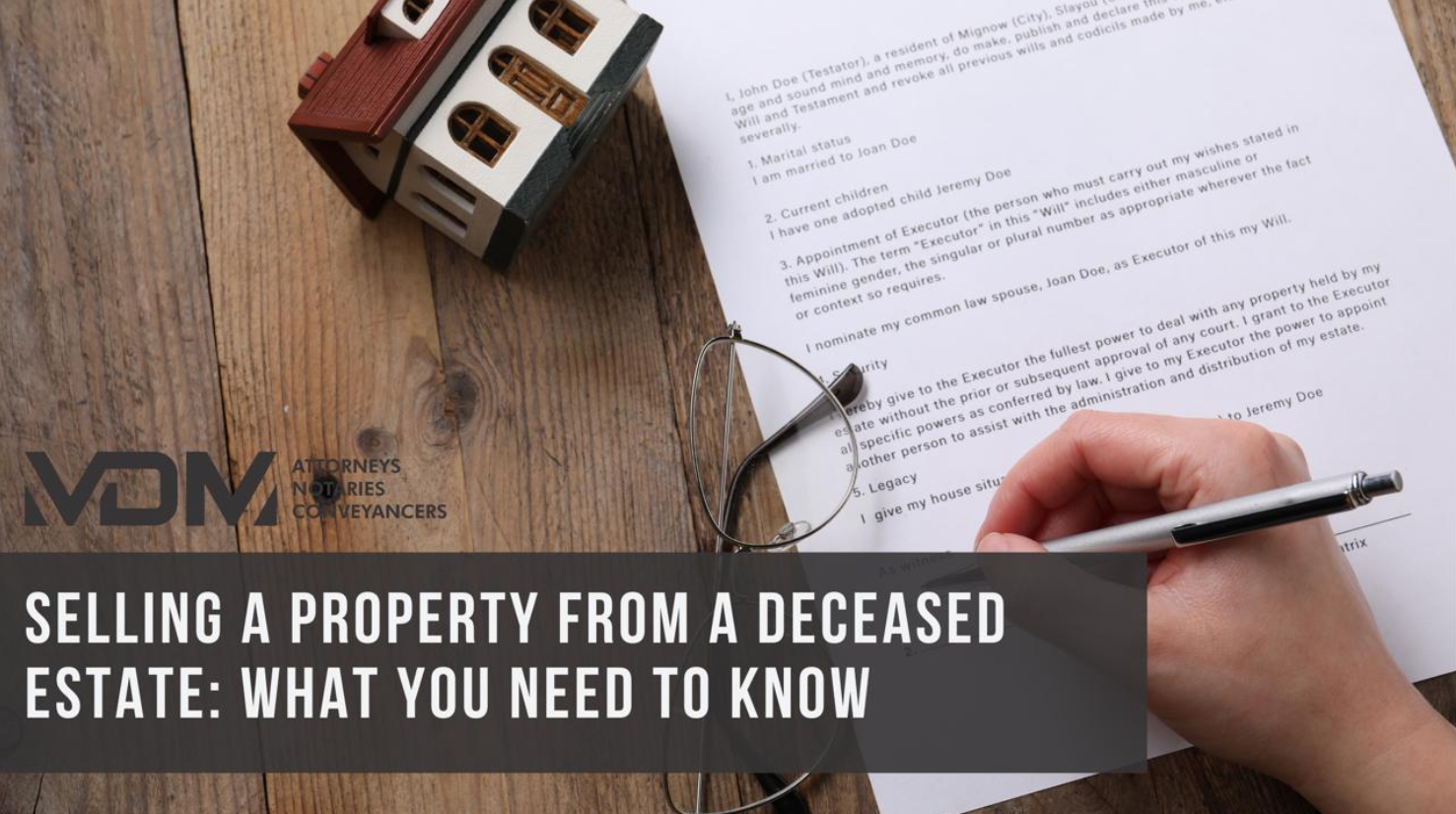
When someone passes away, their assets - including immovable property - form part of their deceased estate. If the property is to be sold, it cannot be treated like an ordinary sale. There is a defined legal process that must be followed before transfer can take place. Understanding the steps upfront helps families, heirs, and agents avoid costly delays and disputes.
Step 1: Reporting the Estate
The estate must first be reported to the Master of the High Court. A death notice, death certificate, will (if there is one), and other prescribed documents are submitted. The Master then issues Letters of Executorship (or Letters of Authority for small estates).
👉 Without these documents, nothing can be done to sell or transfer the property.
Step 2: Appointment of the Executor
The executor of the estate - often an attorney, trust company, or family member - is the only person legally authorised to administer the estate. This includes signing the mandate with an estate agent and the agreement of sale.
👉 Heirs or family members cannot sell the property on their own.
Step 3: Obtaining Consent from Heirs
If the property is specifically bequeathed to a beneficiary in the will, the executor must ensure the heirs agree before it can be sold. In an intestate estate (no will), the heirs as determined by the Intestate Succession Act must consent to the sale.
👉 This is crucial to prevent disputes later on.
Step 4: Settling Debts and Taxes
The executor must ensure that:
- Estate debts (including mortgage bonds) are settled;
- Rates clearance figures are obtained from the municipality; and
- Estate duty and other taxes are calculated and paid, where applicable.
The property cannot be transferred until these obligations are dealt with.
Step 5: Approval of the Liquidation and Distribution Account (L&D)
The executor prepares an L&D account, setting out all assets and liabilities of the estate, as well as how they will be distributed. The account must be approved by the Master and lie open for inspection at the Magistrate’s Court.
👉 Only after this approval can transfer to the purchaser proceed.
Step 6: Transfer of the Property
Once all requirements are met:
- The conveyancers attend to the transfer of the property into the buyer’s name;
- Proceeds from the sale are paid into the estate account, to be distributed according to the will or intestate succession rules.
Common Delays in Estate Property Sales
- Heirs not agreeing on the sale price;
- Delays in issuing Letters of Executorship;
- Outstanding municipal accounts or unpaid bonds;
- Disputes about the validity of the will.
Why Legal Guidance is Essential
Selling property from a deceased estate is far more complex than a normal sale. Missing a step can delay transfer for months or even years.
At VDM Attorneys, our experienced conveyancers and estate specialists work hand-in-hand with executors, heirs, and agents to ensure the process runs smoothly - protecting everyone’s interests and avoiding unnecessary disputes.
📩 Contact us today if you need assistance with a deceased estate property sale.